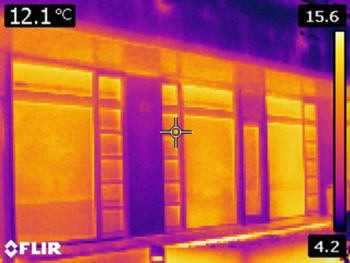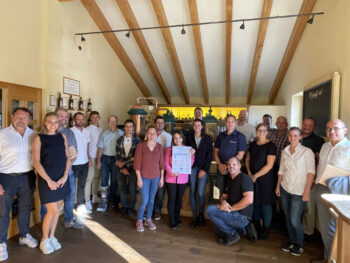Revision of federal funding for efficient buildings
The BEG continues to consist of the three sub-programmes
- Federal funding for efficient buildings – residential buildings (BEG WG)
- Federal funding for efficient buildings – non-residential buildings (BEG NWG)
- Federal Funding for Efficient Buildings – Individual Measures (BEG EM)
and serves to accelerate the transformation of the building sector.
The latest update of the law covers refurbishments through individual measures (change of heating source, insulation, etc.) for residential buildings, as well as investment cost subsidies (up to 70%) and subsidized supplementary loans for non-residential buildings. From 27 February, it will be possible to apply for the new subsidies for single-family homes. This will be followed in staggered form for apartment blocks and for landlords, local authorities, and companies.
Adjusted subsidy rates in the federal subsidy programme for efficient buildings
The guidelines for the BEG EM published by the Federal Ministry for Economic Affairs and Climate Protection on 21 December 2023 provide new percentages for the promotion of specific individual measures to increase the energy efficiency of buildings [2]. BEG NWG and BEG WG remain in the same form and funding guidelines. The installation of a new heat generation system is subsidised with a basic subsidy rate of 30 %. A further 5% efficiency bonus for the installation of certain heat pumps and an emissions reduction supplement of €2,500 for particularly low dust emission values from biomass heating systems are also provided in the guidelines. A climate speed bonus of 20% is intended to provide a special incentive to switch to renewable heat generation as soon as possible. From 2029, this bonus will decrease by 2 % every 2 years. An income-related bonus of up to 30 % is also possible. However, both bonuses only apply to owner-occupiers. The creation of an individualised renovation roadmap (iSFP) can increase the funding for certain individual measures. Table 1 below provides an overview of the funding amounts for the BEG EM valid as of 1 January 2024. The changes compared to the subsidy rates valid until then are shown in brackets

New upper limits for eligible expansion
In addition to adjusted percentages, the maximum limits have also been increased. For residential buildings, heat generators and other energy-related measures (building envelope, system technology and heating system optimisation) can be subsidised with up to €30,000 per residential unit. If the iSFP bonus is guaranteed, the subsidy can be increased to up to €90,000 per residential unit.
For non-residential buildings, adjusted maximum limits also apply for the subsidisation of investment costs, although the maximum subsidy of €5,000,000 per building no longer applies. Buildings with a net floor area of up to 105 m2 can receive a maximum of €30,000. For buildings with larger net floor areas, square metre-dependent maximum funding rates apply for the installation of new heat generators (up to €400/m2 for buildings with a net floor area of 1000m2 or more) and other efficiency measures (€500/m2).
Further new features
Another new feature is the newly introduced supplementary loan of up to €120,000 for residential buildings with a household income of up to €90,000 under improved conditions (KfW plans to publish the exact interest rates on 27 February 2024). For non-residential buildings, the limit is €5,000,000. Applications for investment cost subsidies and supplementary loans can be submitted to BAFA and KfW from 27 February 2024. It should be noted that the application can be submitted later if the heating system has already been replaced or other efficiency measures have been carried out.
For legally binding information and updates, please refer to the links under “Literature”.
Literature
[1] Gesetz zur Einsparung von Energie und zur Nutzung erneuerbarer Energien zur Wärme- und Kälteerzeugung in Gebäuden (GEG), https://www.gesetze-im-internet.de/geg/
[2] Bundesministerium für Wirtschaft und Klimaschutz: Richtlinie für die Bundesförderung für effiziente Gebäude (BEG EM), https://www.energiewechsel.de/KAENEF/Redaktion/DE/PDF-Anlagen/BEG/bundesfoerderung-f%C3%BCr-effiziente-gebaeude-einzelmassnahmen-20231229.pdf?__blob=publicationFile&v=3
[3] Förderübersicht: Bundesförderung für effiziente Gebäude – Einzelmaßnahmen, https://www.bafa.de/SharedDocs/Downloads/DE/Energie/beg_em_foerderuebersicht.html


